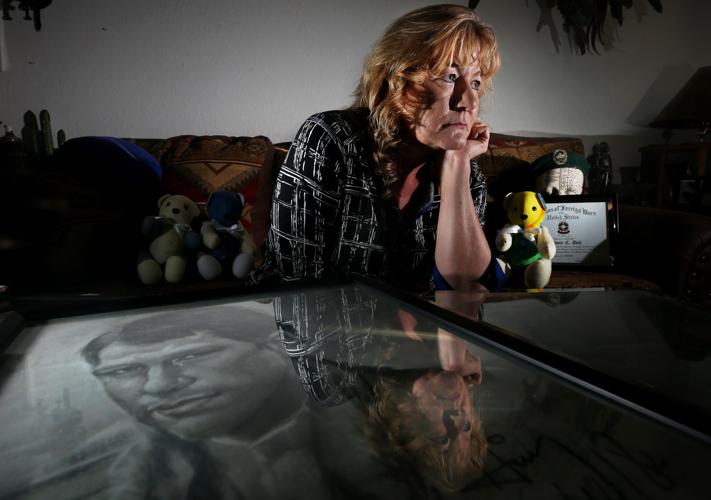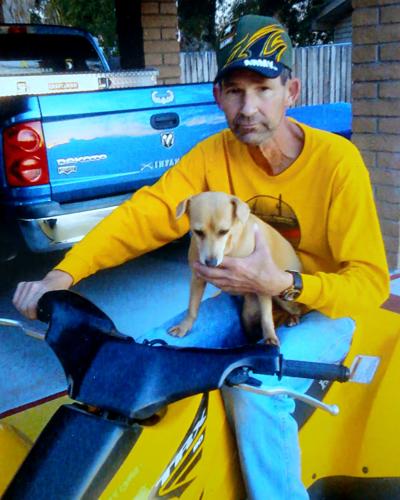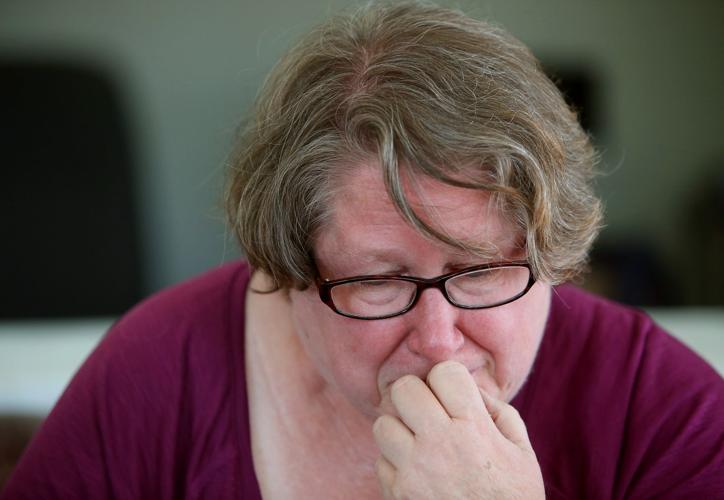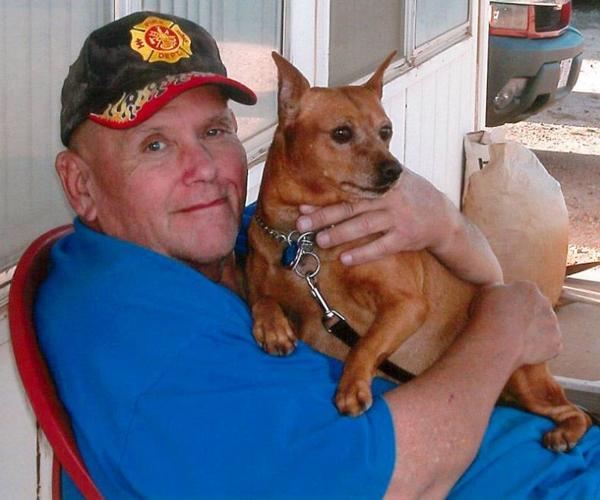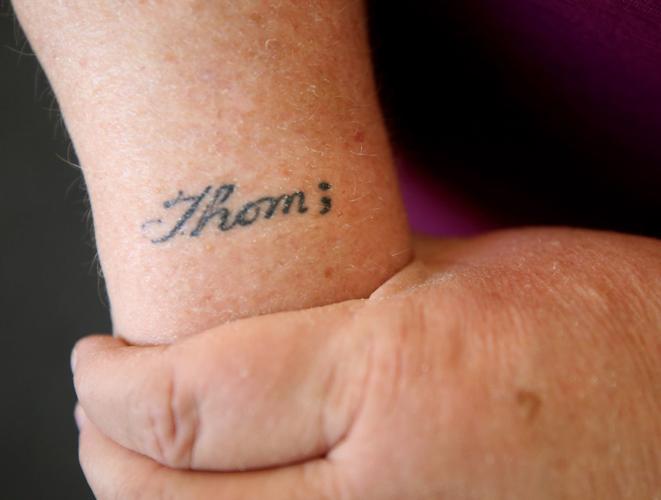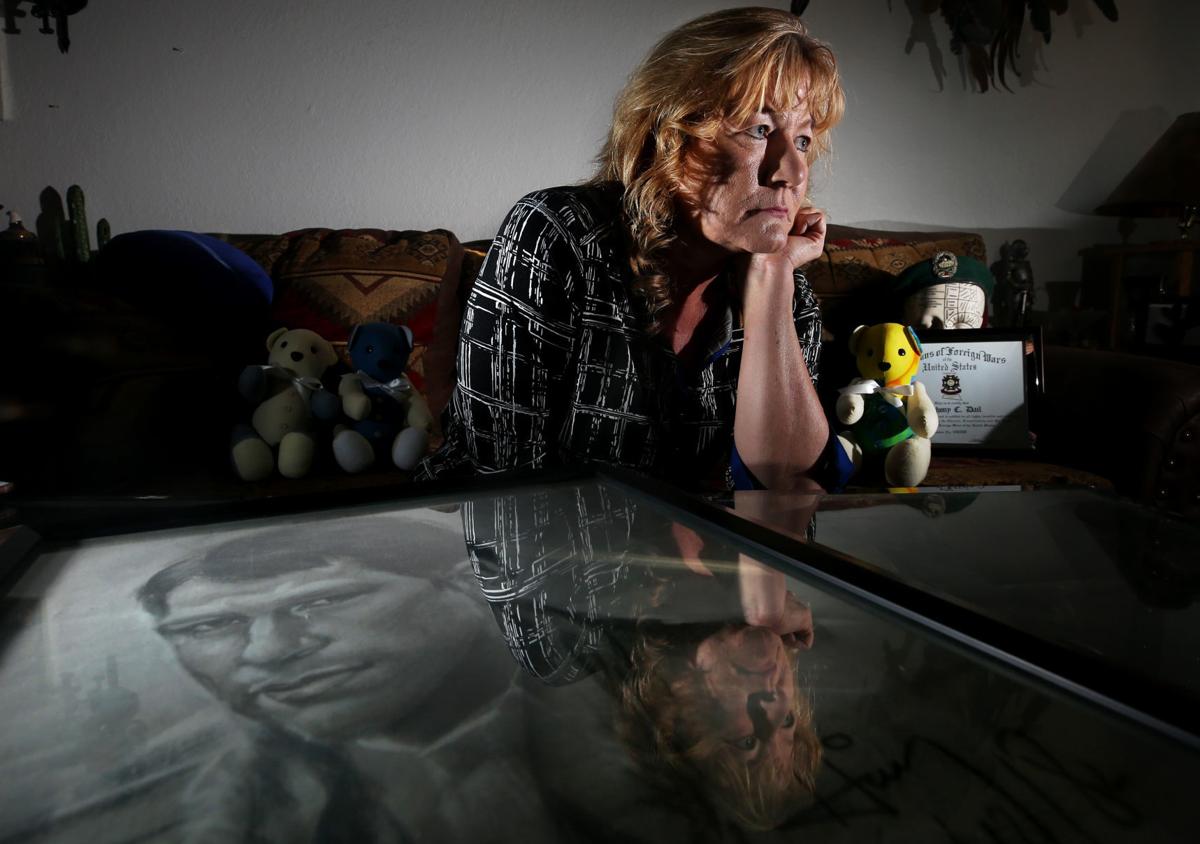Suicide rates have been rising across the nation, particularly among older adults.
For people 55 to 64, it is the eighth leading cause of death, according to a recent study from the Centers for Disease Control and Prevention.
In Pima County, the number of suicides among older adults has remained relatively the same over the past four years, except in the 60-69 age group, where there has been a 40 percent increase in those taking their own life, according to data from Dr. Gregory Hess, the county’s chief medical examiner.
Also, of the 787 suicides in Pima County during that time, adults age 50 and above made up 407 of those deaths, according to the medical examiner’s report.
“The majority of older adults— about 65 percent — who commit suicide suffer from a major depression,” said Dr. Mindy Fain, chief of geriatrics, general internal medicine and palliative medicine at the University of Arizona Center on Aging.
“But many who commit suicide do not have an official mental health diagnosis,” said Fain, adding that “it doesn’t mean it doesn’t exist.”
Sharing stories
to help others
The facts and figures are most striking to Diane Dail of Tucson and Laura McGaffey, of Pearce in Cochise County. Both women are grappling with the deaths of their husbands — each taking their lives with a firearm last year. Neither man was diagnosed with a mental health condition.
Men more frequently commit suicide than women and use firearms to do it, statistics show.

Tony Dail, shown with his service dog, K.C., killed himself in February 2017 in a parking lot at the VA hospital.
Dail and McGaffey, who said they are sharing their stories in the hopes of helping others, are learning to cope and heal through bereavement groups facilitated at Casa de la Luz Hospice, and plan on attending a Survivors of Suicide support group. (See information box.)
In her home on Tucson’s northwest side, Dail was sitting in the living room near a portrait of her husband, Army Master Sgt. Anthony “Tony” Dail, an infantry and combat engineer with the 101st Airborne Division. He served seven years and was honorably discharged in 1987.
The 58-year-old veteran took his life with an antique shotgun blast to the head on the morning of Feb. 4, 2017, in a parking lot at the VA hospital on South Sixth Avenue. The retired Army sharpshooter was found by his blue 2007 Dodge Ram truck. He left a suicide note.
In part, the note read: “Forgive me of my sins, I’m not just sick in the body, but also in my head! This ringing noise just won’t stop!!!”
Authorities came to the couple’s home to notify Dail of her husband’s death. “I collapsed on the concrete slab outdoors,” recalled Dail. She was carried into her home, and a neighbor stayed with her until relatives arrived.
Earlier that morning, Dail kissed Tony in the laundry room, and said, “See you later. Love you,” as she left to go walk their dog. He replied: “Love you.”
Tony was not at home when Dail, 53, returned, so she called his cellphone, but there was no answer. “It went to voicemail, which was very unusual,” she said, explaining that he always answered her calls.
Hours passed and then she called his parents in the early afternoon, but they had not seen him. Dail decided to call authorities to report her husband missing, thinking he may have been injured in a crash.
When she learned what happened, Dail could not believe her Tony, who she knew for 26 years, and was married to for 19, was dead. She had to see him.
Dail went to the county morgue and spent what seemed hours holding and kissing Tony’s hand while he was lying covered by a white sheet. “I identified him by a finger,” she said.

Laura McGaffey, 61, composes herself, on June 22, 2018, as she talks about the day her husband, Thom, committed suicide outside of their home in Pearce, Ariz. McGaffey says her husband was 69 years old and they had been married for 40 years when he took his own life with a gun in May 2017.
For McGaffey, her husband, Thom, shot himself in the head with a handgun by the garbage cans in front of their 1-acre property. It was May 9, 2017, in the early evening in the small rural community east of the Dragoon Mountains. Thom was 69.
McGaffey heard the gunshot from inside their home where they retired in 2003, leaving the Silicon Valley where they worked as computer engineers. They settled in Pearce, longing for quiet and a warm climate.
That evening the peace was disrupted. Thom had talked about suicide and McGaffey figured he had shot himself. “Oh God! Oh God! Oh God! What do I do? What do I do?, recalled McGaffey in the moments after the gunshot.
“No, no, no, no. It couldn’t have happened,” she said out loud, reliving that evening during an interview at her home. She said she walked outdoors and saw a piece of his shirt on the ground. She kept walking and opened the gate and took a step outside the property, and saw Thom lying face down. His head was covered by a hoodie.
“I looked at him and all of a sudden it hit me,” she said. “A pool of blood was around his head. I lost it and I started screaming ‘help’, not knowing what to do,” recalled McGaffey. She said she ran across the street and banged on the front door of her neighbor’s home. Her friend called 911.
McGaffey stayed at her friend’s for a couple of days, not able to go home. At the end of last year, she went to an artist in Benson and had “Thom;” tattooed on her right wrist. The semicolon represents hope and love to those struggling with suicide and other afflictions.
She found a note Thom left for her: “It is a long hard road sometimes to the end of days, baby, but I will travel it with you as far as I can go.”

Thom McGaffey with their dog, Lando, in 2007.
The McGaffeys were married for 40 years. They both volunteered for the San Jose Search and Rescue group, and Thom was a former volunteer for the Sunsites-Pearce Fire District. “He was always mentoring someone. He was very big-hearted,” said McGaffey, 61.
She said Thom suffered poor health and was in pain, leading her to believe that was the underlying reason for him ending his life. Much of Thom’s health problems stemmed from injuries suffered in a car wreck 33 years ago.
His health deteriorated over the years, causing him difficulty in walking. Several years ago, he began using canes and months before his suicide he talked about the need for a wheelchair, but he was reluctant, said McGaffey.
Dail also reflected on Tony’s strength and his health battles. She said Tony worked as a labor foreman in construction for years and underwent three bouts of cancer starting with lymphoma in 2007. In 2013, he received a bone marrow transplant.
“He had a fighting spirit and was courageous,” said Dail, a clinical nurse, in describing Tony’s rounds of surgery, radiation and chemotherapy. Ultimately, his body took a beating from the treatments and the side effects from medications resulted in osteoporosis, affecting his spine.
When Dail is emotionally stronger, she hopes to volunteer at the VA hospital’s oncology unit. She received $4,000 in memory of Tony, which she presented to the unit to provide coffee and refreshments to patients.

Laura McGaffey got a tattoo with her husband’s name and a semicolon towards the end of 2017. McGaffey was inspired by the Project Semicolon organization, which is dedicated to the prevention of suicide. Laura’s husband, Thom, took his own life in May 2017.
Getting through
the grief, dealing
with the anger
Dail and McGaffey are still undergoing the healing process — dealing with days of tears, and feeling numb. They have attended bereavement sessions, both saying the sessions have helped. They have felt anger toward their husbands. They have felt guilt, blaming themselves for not preventing the suicides.
“I find that guilt is a much larger and more complex component of the grief response among survivors of suicide than the general population of grievers,” said Carol Miller, a licensed clinical social worker who is the bereavement program manager at Casa de la Luz Hospice. She facilitates Survivors of Suicide support groups for adults.
Miller said nearly everyone she has counseled said they did not see that their loved one was contemplating suicide, and those who did encouraged them to seek professional help. However, she said, older adults “are less likely to reach out to a mental health professional.” In addition to helping survivors work through the guilt, she also helps them cope with the loss and trauma.
“Please don’t ever put anyone through this,” said Dail to those contemplating suicide. Rather, “talk to someone and seek out help.”
To curb suicide, “education and awareness is key to turning the tide in this public health crisis, along with better access to mental health services in the community,” Fain said.
Some specific risks for suicide, other than a mental health diagnosis, said Fain, include changes in health or wellness, relationships, the death of a loved one, substance abuse, and financial problems.
Warning signs a person is contemplating or planning suicide may include them talking about wanting their life to end, or not wanting to be a burden. “It is important to know that if they suddenly become quiet, or appear to be more ‘at peace’, it may be because they have made the decision to act on those thoughts, and have a plan,” Fain said.
The doctor said that even if it may be difficult, it “is important to ask your loved one directly if they are thinking of hurting themselves.” Fain also suggested that guns be removed from the home and the person see their doctor or a mental health specialist.
Those in need can reach out by calling crisis hotlines (see box at top of this page), including 911, and also reach out to the person’s physician for a medical evaluation.


